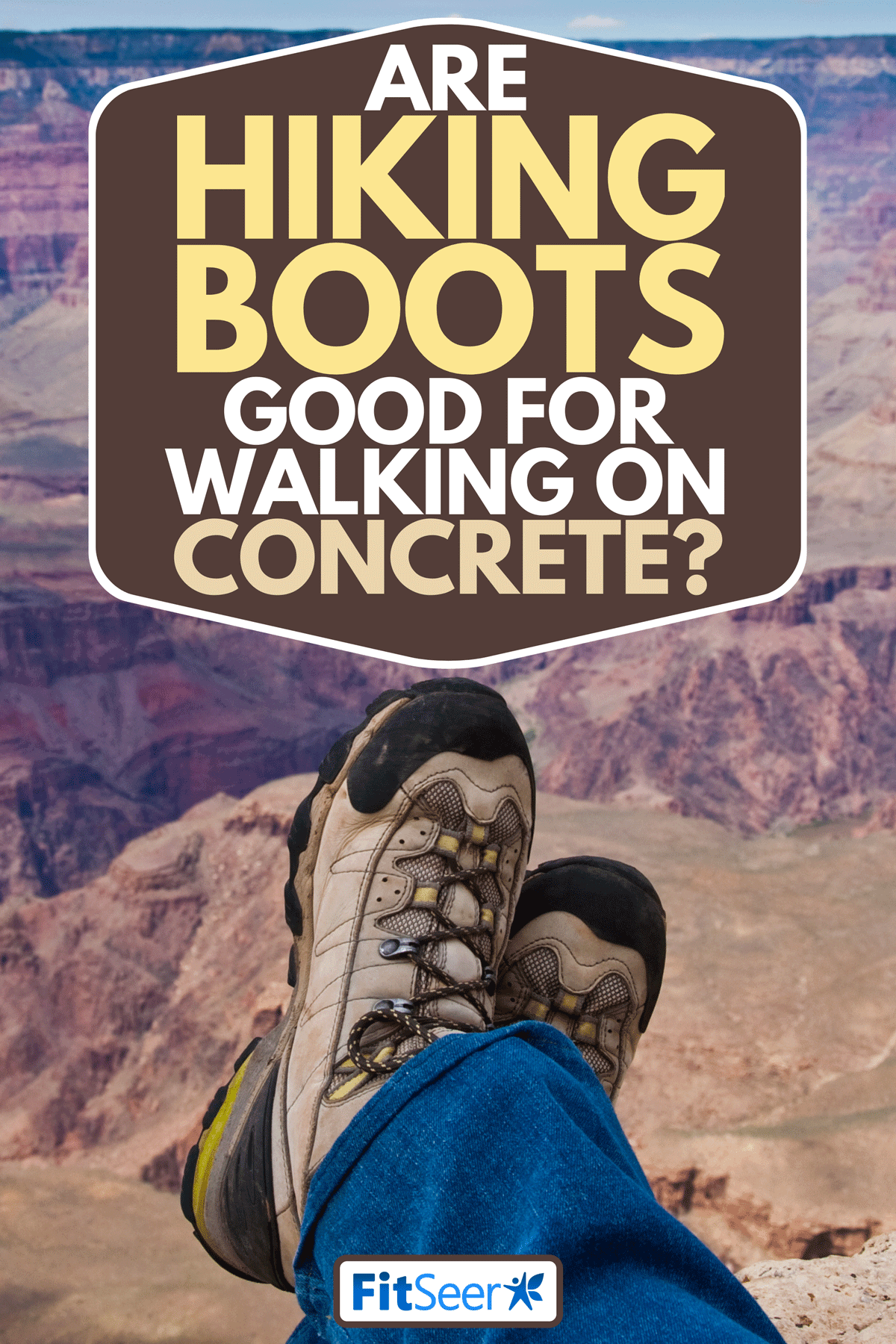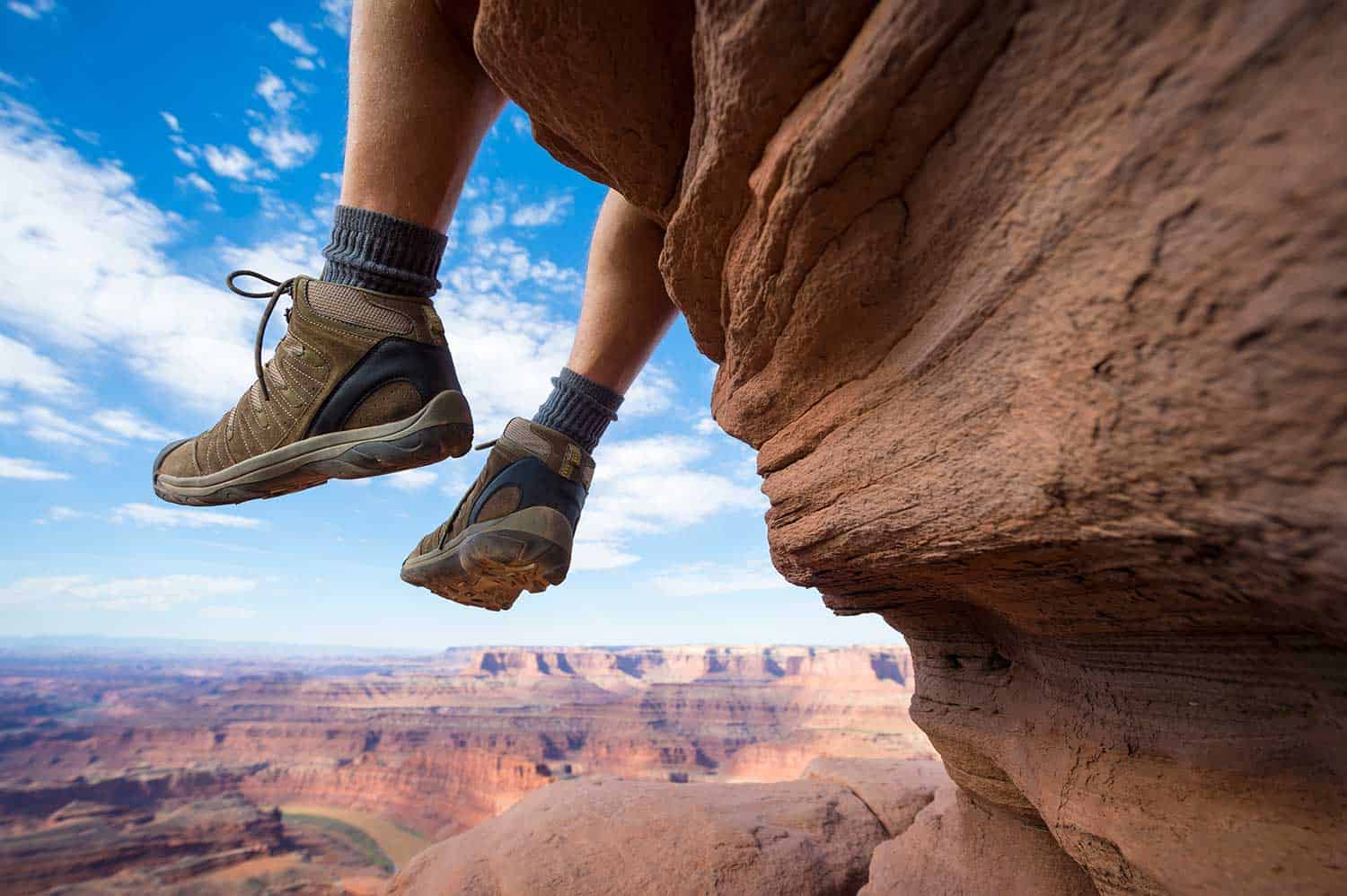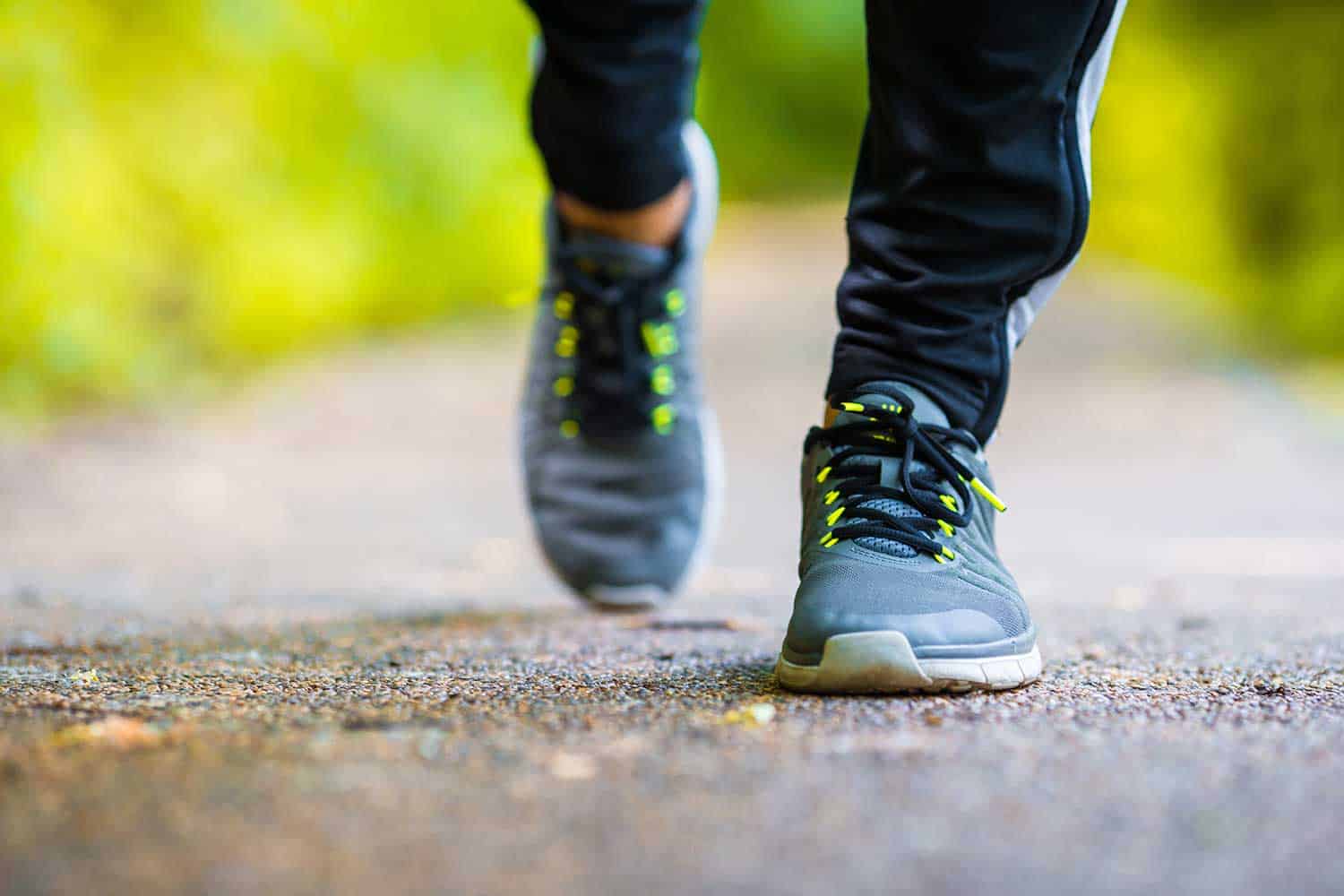If you've invested in some hiking boots but can't get out to the trails right now, you might be feeling the itch to get some use out of them. Should you put them on and walk around the neighborhood with them, or should you put on another pair of shoes? The answer might be more complicated than you think.
Hiking boots are not designed for walking on concrete. They are meant to be worn on trails with loose or uneven surfaces. The things that make them practical for hiking make them impractical for walking on concrete. Walking shoes, on the other hand, are perfect for walking on pavement.
There might not seem to be much difference between hiking trails and concrete. But we've done the research and have compiled the information into this helpful guide where we'll show you the differences between the two styles of shoes. We'll also provide you with some advice about how to keep your feet healthy, so be sure to keep reading.

Hiking Boots Vs. Walking Shoes
Hiking boots and walking shoes are designed and intended for different purposes. More specifically, each one is designed to work best on a specific surface. Here are the intended uses of each type of shoe.
Are hiking boots meant for pavement?

Hiking boots are named after their primary activity: hiking. Hiking is generally known as a type of walking in some sort of wilderness. Many hiking trails climb mountains, traverse forests, and wind around canyons. Essentially, if you go hiking, you can expect to be on some sort of slope or unpaved surface.
Thus, the shoes designed for hiking have a thicker, heavier sole than most other shoes. This protects the bottom of your foot when walking on uneven surfaces or potentially sharp rocks and sticks. It also means they will last longer on these unpredictable paths.
However, this thick sole means that these shoes have less give and cushion than walking shoes. This is especially true of the shoes serious hikers wear known as "full-shank." A full-shank boot has a hard plastic outsole, while a three-quarter-shank boot or no-shank boot is much more flexible.
The soles of hiking boots have more traction, with deeper tread. While this helps you grip rocky paths, it isn't necessary on concrete. In fact, walking on concrete too much can wear down your hiking boot's tread more quickly than on loose paths. Eager to hit the trails but want to prepare your body? Read our post to get informed: How To Hike Without Getting Tired [7 Crucial Tips!]
Hiking boots are a fantastic option for hiking paths but have features that make them a subpar choice for walking on concrete. Here are a couple of the best hiking boot options on the market:
Columbia Hiking Boots
Click here to view these boots on Amazon.
Foxelli Hiking Boots
Click here to view these boots on Amazon.
Now that you've got your hiking boots, there is some other gear you'll need. Here's a list to get you started: Hiking Gear List For Beginners: 10 Must-Have Items
Are walking shoes meant for pavement?

Alternatively, wearing walking shoes on a hike is not your best bet. This is because walking shoes have a softer, more cushioned sole than hiking boots. This is great for walking long distances on an even surface. The sole is still durable, but in a different way than hiking boots. Walking on concrete won't harm walking shoes.
Generally, walking shoes weigh less than hiking boots. So, the average person would say that walking shoes feel more comfortable than hiking boots. This is because these shoes don't have to be prepared for extreme circumstances.
Most walking shoes also have what's known as an Achilles heel protector. This is the tab at the back of the shoe that supports the all-important Achilles tendon from too much stress. This protector is in addition to other comfort features designed specifically for long walks.
Here are a couple of pairs that provide these features.
New Balance Walking Shoes
Click here to view these shoes on Amazon.
Ryka Walking Shoes
Click here to view these shoes on Amazon.
Can you wear hiking boots every day?
You can absolutely wear hiking boots every day, but recognize that hiking boots have a specific purpose and are designed for that purpose. Thus, wearing them for unintended purposes might be uncomfortable and might wear them out more quickly than other shoes. Many types of hiking boots are expensive, so you'll want to protect them as much as possible.
Getting ready for a hike but want to know what to expect? Here's an article that will help you plan your route and goals: How Far Should I Hike In A Day? [Typical Numbers Revealed]
How do you keep your feet from hurting when standing on concrete?
Standing on concrete for long periods of time can cause foot pain. Specifically, the plantar fascia tendon that stretches the length of your feet, plus the ball and heel of the feet can hurt over time. Here are a few tips to help you avoid these painful areas.
Wear the right shoes
Though it might seem like flat-soled shoes would be most comfortable when standing, that's not actually true! Aim for an elevated heel between one-quarter-inch and two inches high. In addition to this elevation, make sure your shoes have strong arch support. If your shoes don't have enough arch support, you can purchase insoles like the ones below.
Click here to view these insoles on Amazon.
If your feet often hurt while standing on concrete, it might be because your shoes don't fit. In all likelihood, they are a half-size too small. This cuts off circulation to your feet and puts pressure on painful points. By the end of the day, your feet are usually a half-size bigger than they were at the start. Try a slightly bigger shoe to see if that helps.
Stretches
Another way to help your feet feel better is to do stretches frequently. The pain in your feet is often caused by blood running to your feet and gathering there. Forcing your body to pump the blood out of your feet relieves a lot of pressure.
One great stretch, known as the "runner's stretch," lengthens your calves and stretches the muscles in your feet. Face a wall and put your hands on it. Extend one leg backward, pushing the heel as close to the ground as it will go. Hold for twenty seconds and then switch legs.
Calf raises are another useful stretch for painful feet. Stand with your feet shoulder-width apart. Raise your heels as high as you can; it should be a couple of inches. Hold that position for a second, then lower your heels. Repeat this ten to fifteen times.
Ice And Massage
Ice is a common remedy for swollen body parts, so it's no surprise that it will relieve your foot pain, too! One icing method that's unique to foot pain uses a frozen water bottle. Fill a plastic bottle with water and put it in the freezer.
Once the bottle is frozen, sit in a chair, put the bottle on the floor, and roll the bottom of your foot over it. Put enough pressure on the bottle to massage your foot. Do this for fifteen to twenty minutes per foot.
If you don't have time to freeze a water bottle, do the same thing with a tennis ball. This will stretch out the tendons in your feet and make it less painful to stand.
In Closing
Hiking boots are a fantastic choice for walking on uneven or loose terrain. They have thick soles with heavy tread and are generally more firm than other types of shoes to protect your feet. But when walking on simple pavement, walking shoes are better and more comfortable.
Picking out the right shoes can make a world of difference in how your feet feel. Hopefully, this article has helped you pick out the right pair for your situation.










![Read more about the article Can Football Players Wear Jewelry? [That Depends!]](https://fitseer.com/wp-content/uploads/2020/10/football-players-on-the-scrimmage-line-Can-Football-Players-Wear-Jewelry-500x333.jpg)
![Read more about the article How Can I Practice Basketball Indoors? [5 Suggestions]](https://fitseer.com/wp-content/uploads/2022/03/Shot-of-basketball-players-playing-basketball-indoor-500x333.jpg)